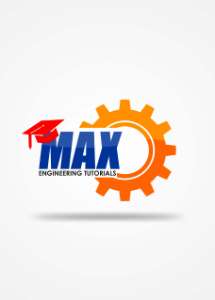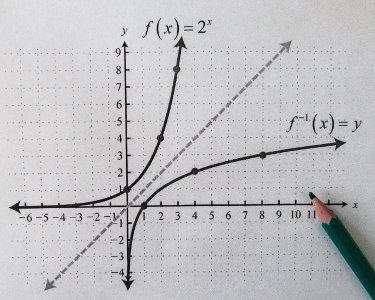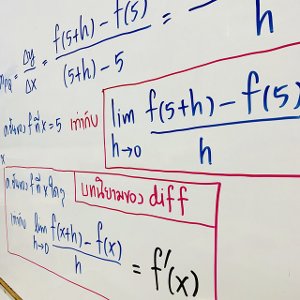The mean-value theorem - Lesson 2, Differentiability of Functions (Theorems) | Limits, Continuity and Differentiability of Real-Valued Functions - Advanced Calculus
SPONSORED Get Personalized Tutoring NowStruggling with a tough concept or looking to advance your skills? Our expert tutors offer one-to-one guidance tailored to your unique needs.
Get instant support, clear explanations, and practical strategies to master even the most challenging subjects. With flexible scheduling and customized learning plans, success is just a session away.
Book your personalized tutoring today and start achieving your academic goals!
Get Personalized Tutoring NowStruggling with a tough concept or looking to advance your skills? Our expert tutors offer one-to-one guidance tailored to your unique needs.
Get instant support, clear explanations, and practical strategies to master even the most challenging subjects. With flexible scheduling and customized learning plans, success is just a session away.
Book your personalized tutoring today and start achieving your academic goals!
Struggling with a tough concept or looking to advance your skills? Our expert tutors offer one-to-one guidance tailored to your unique needs. Get instant support, clear explanations, and practical strategies to master even the most challenging subjects. With flexible scheduling and customized learning plans, success is just a session away. Book your personalized tutoring today and start achieving your academic goals!
 Limits, Continuity and Differentiability of Real-Valued Functions - Advanced CalculusThis course comprehensively treats limits, continuity and differentiability of real-valued single-variable functions. You will learn how to:
- Define and classify real-valued functions and their properties, such as domain, range, and graphs
- Identify and compare different kinds of real-valued functions, such as composites, piecewise functions, polynomials, rational functions, algebraic functions, transcendental functions, odd and even functions
- Find the limit of a function as the independent variable approaches a certain value, and use the formal (epsilon-delta) and informal definitions of limits
- Find the limit of a function using various methods and techniques, such as direct substitution, theorems, graphing, factorization, conjugates, L’Hôpital’s rule, use of known special limits, the squeeze theorem, two-sided limits, etc.
- Find the limit of a function at infinity or an infinite limit, and use the formal and informal definitions of limits at infinity and infinite limits
- Find the continuity of a function at a point or on an interval, and use the graphical, formal, and informal definitions of continuity
- Identify and understand different types of discontinuities, such as removable, jump, and infinite discontinuities
- Apply the max-min theorem and the intermediate-value theorem to continuous functions and their graphs
- Find the differentiability of a function at a point or on an interval, and use the graphical and formal definitions of differentiability
- Find the derivative of a function as the slope of the tangent line or the rate of change of the function, and use the first-principle method and the rules of differentiation to calculate derivatives
- Apply the mean-value theorem and the Rolle's theorem to differentiable functions and their graphs
- Find the higher-order derivatives of a function by applying the differentiation rules repeatedly, and use the notation and terminology for higher derivatives
- Apply the Leibniz's formula to find the derivatives of products of functions
- Find the Taylor and Maclaurin series expansions of differentiable functions and use them to approximate functions and their values
This course is suitable for anyone who wants to learn or review the advanced topics of calculus and its applications. It is especially useful for students and professionals in analysis, differential equations, optimization, physics, engineering, and other related fields.
By the end of the course, you will have a firm grasp of advanced single-variable differential calculus concepts and their applications. You will also be able to apply the knowledge and skills you learned to real-world problems and challenges that involve analyzing the behavior, trends, and optimization of functions and their graphs.
Once enrolled, you have access to dynamic video lessons, interactive quizzes, and live chat support for an immersive learning experience. You engage with clear video explanations, test your understanding with instant-feedback quizzes and interact with our expert instructor and peers in the chat room. Join a supportive learning community to exchange ideas, ask questions, and collaborate with peers as you master the material, by enrolling right away.
Limits, Continuity and Differentiability of Real-Valued Functions - Advanced CalculusThis course comprehensively treats limits, continuity and differentiability of real-valued single-variable functions. You will learn how to:
- Define and classify real-valued functions and their properties, such as domain, range, and graphs
- Identify and compare different kinds of real-valued functions, such as composites, piecewise functions, polynomials, rational functions, algebraic functions, transcendental functions, odd and even functions
- Find the limit of a function as the independent variable approaches a certain value, and use the formal (epsilon-delta) and informal definitions of limits
- Find the limit of a function using various methods and techniques, such as direct substitution, theorems, graphing, factorization, conjugates, L’Hôpital’s rule, use of known special limits, the squeeze theorem, two-sided limits, etc.
- Find the limit of a function at infinity or an infinite limit, and use the formal and informal definitions of limits at infinity and infinite limits
- Find the continuity of a function at a point or on an interval, and use the graphical, formal, and informal definitions of continuity
- Identify and understand different types of discontinuities, such as removable, jump, and infinite discontinuities
- Apply the max-min theorem and the intermediate-value theorem to continuous functions and their graphs
- Find the differentiability of a function at a point or on an interval, and use the graphical and formal definitions of differentiability
- Find the derivative of a function as the slope of the tangent line or the rate of change of the function, and use the first-principle method and the rules of differentiation to calculate derivatives
- Apply the mean-value theorem and the Rolle's theorem to differentiable functions and their graphs
- Find the higher-order derivatives of a function by applying the differentiation rules repeatedly, and use the notation and terminology for higher derivatives
- Apply the Leibniz's formula to find the derivatives of products of functions
- Find the Taylor and Maclaurin series expansions of differentiable functions and use them to approximate functions and their values
This course is suitable for anyone who wants to learn or review the advanced topics of calculus and its applications. It is especially useful for students and professionals in analysis, differential equations, optimization, physics, engineering, and other related fields.
By the end of the course, you will have a firm grasp of advanced single-variable differential calculus concepts and their applications. You will also be able to apply the knowledge and skills you learned to real-world problems and challenges that involve analyzing the behavior, trends, and optimization of functions and their graphs.
Once enrolled, you have access to dynamic video lessons, interactive quizzes, and live chat support for an immersive learning experience. You engage with clear video explanations, test your understanding with instant-feedback quizzes and interact with our expert instructor and peers in the chat room. Join a supportive learning community to exchange ideas, ask questions, and collaborate with peers as you master the material, by enrolling right away.
This course comprehensively treats limits, continuity and differentiability of real-valued single-variable functions. You will learn how to: - Define and classify real-valued functions and their properties, such as domain, range, and graphs - Identify and compare different kinds of real-valued functions, such as composites, piecewise functions, polynomials, rational functions, algebraic functions, transcendental functions, odd and even functions - Find the limit of a function as the independent variable approaches a certain value, and use the formal (epsilon-delta) and informal definitions of limits - Find the limit of a function using various methods and techniques, such as direct substitution, theorems, graphing, factorization, conjugates, L’Hôpital’s rule, use of known special limits, the squeeze theorem, two-sided limits, etc. - Find the limit of a function at infinity or an infinite limit, and use the formal and informal definitions of limits at infinity and infinite limits - Find the continuity of a function at a point or on an interval, and use the graphical, formal, and informal definitions of continuity - Identify and understand different types of discontinuities, such as removable, jump, and infinite discontinuities - Apply the max-min theorem and the intermediate-value theorem to continuous functions and their graphs - Find the differentiability of a function at a point or on an interval, and use the graphical and formal definitions of differentiability - Find the derivative of a function as the slope of the tangent line or the rate of change of the function, and use the first-principle method and the rules of differentiation to calculate derivatives - Apply the mean-value theorem and the Rolle's theorem to differentiable functions and their graphs - Find the higher-order derivatives of a function by applying the differentiation rules repeatedly, and use the notation and terminology for higher derivatives - Apply the Leibniz's formula to find the derivatives of products of functions - Find the Taylor and Maclaurin series expansions of differentiable functions and use them to approximate functions and their values This course is suitable for anyone who wants to learn or review the advanced topics of calculus and its applications. It is especially useful for students and professionals in analysis, differential equations, optimization, physics, engineering, and other related fields. By the end of the course, you will have a firm grasp of advanced single-variable differential calculus concepts and their applications. You will also be able to apply the knowledge and skills you learned to real-world problems and challenges that involve analyzing the behavior, trends, and optimization of functions and their graphs. Once enrolled, you have access to dynamic video lessons, interactive quizzes, and live chat support for an immersive learning experience. You engage with clear video explanations, test your understanding with instant-feedback quizzes and interact with our expert instructor and peers in the chat room. Join a supportive learning community to exchange ideas, ask questions, and collaborate with peers as you master the material, by enrolling right away.
 MTH 201: Mathematical Methods IComprehensive treatise of advanced calculus covering limits, continuity and differentiability, infinite sequences and series, partial differentiation, numerical methods and ordinary differential equations.
Curated for second-year students of engineering and physical sciences at Obafemi Awolowo University, Ile-Ife, Nigeria. Students and professionals with similar learning goal will also find this learning track useful.
MTH 201: Mathematical Methods IComprehensive treatise of advanced calculus covering limits, continuity and differentiability, infinite sequences and series, partial differentiation, numerical methods and ordinary differential equations.
Curated for second-year students of engineering and physical sciences at Obafemi Awolowo University, Ile-Ife, Nigeria. Students and professionals with similar learning goal will also find this learning track useful.
Comprehensive treatise of advanced calculus covering limits, continuity and differentiability, infinite sequences and series, partial differentiation, numerical methods and ordinary differential equations. Curated for second-year students of engineering and physical sciences at Obafemi Awolowo University, Ile-Ife, Nigeria. Students and professionals with similar learning goal will also find this learning track useful.